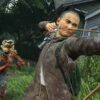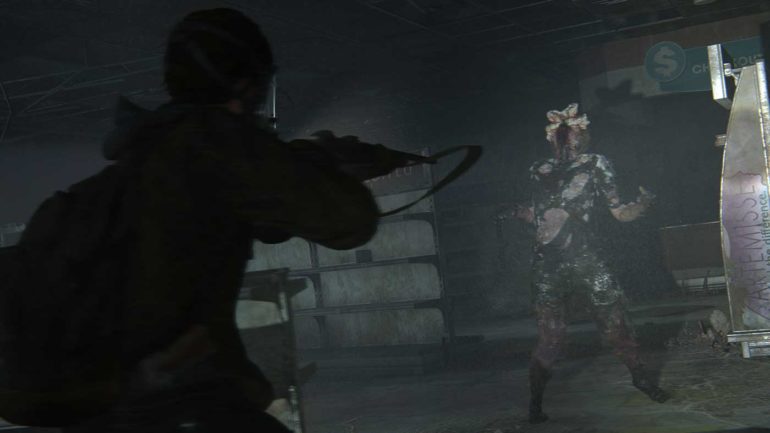Video game sequels are great because they allow developers to revisit beloved worlds and characters, giving them the chance to change, improve upon or even do away with the things that maybe didn’t quite work last time. Though The Last of Us is highly regarded among critics and fans as an exemplary achievement, there’s always room for improvement, and it’d be remiss of Naughty Dog to not reflect on what did and didn’t work while crafting their follow-up, The Last of Us Part II.
THE LAST OF US PART II COVERAGE
- The Last Of Us Part II Hands-On Preview
- Here’s 37 Glorious The Last Of Us Part II GIFS To Blow Your Mind
- Your The Last Of Us Part II Questions Answered
- Four Major Ways That The Last Of Us Part II Improves On The Original
- We Spoke To Naughty Dog’s Lead Game Designer About TLOU: Part II
Now that we’ve finally had our hands on the highly-anticipated sequel, we’re able to see just how Naughty Dog are expanding and iterating on the original, and we wanted to highlight some of the more prominent changes we’ve noticed. It’s important to affirm that what we played was a relatively brief couple of hours of content, and so there are likely a multitude of other big changes and improvements that we don’t know about yet, but this is what we know based on our demo:
Shrubs Up Well (It’s a Plant Joke)
This one might seem obvious, given that The Last of Us was a PlayStation 3 game and Part II is built for the PlayStation 4, but ho-lee shit does this game look good. Naughty Dog’s unmatched talent for incredibly detailed environments, film-like cinematography and scene composition and impossibly good animation is back in full force for this game. The benefits of being designed for more powerful hardware are immediately apparent of course, with far more complex scenery and geometry as well as lush detail and gorgeous lighting, but it all really comes with the team’s impeccable art direction.

One early scene sees Ellie and Dina on horseback as a snowstorm kicks up that causes them to be separated. The feeling of being cut off and turned around is enough on its own, but it’s all turned up a notch or five by the brilliant weather effects on display. Wind and snow belting across the environment, interacting realistically with objects in the world, Ellie and the horse pushing against it as they struggle to move forward. Trees and shrubs whipping violently and debris billowing everywhere. Naughty Dog have truly mastered atmosphere in these games, and that’s before we even talk about the characters.
In case there was any doubt, despite the obvious rapid progression in the quality of animation in Naughty Dog’s games, The Last of Us Part II features the single most lifelike, expressive and believable character models that I’ve seen in a video game, or any other computer-animated medium for that matter. In particular, once the girls make find shelter from the snowstorm they eventually share a tender kiss in the basement of a library, and it’s the first kiss that I’ve ever seen in a game that actually looks like a real kiss.
No Longer Rooted to the Ground
One minor deficiency in the original The Last of Us was the fairly limited ways in which you could move through the game’s locales. Sure, there were some basic environmental puzzles involving placing ladders and planks or pushing dumpsters around to reach high ledges, but these moments were very deliberate and scripted.
The Last of Us Part II gives Ellie a whole new range of movement options compared to Joel, including a game-changing jump/climb/vault button that instantly adds a whole new element of verticality to exploration. In the same early segment as the snowstorm, as Ellie and Dina scope out an abandoned neighborhood, I found one place only accessible only by climbing up something nearby and taking a running jump through a window, which was neat. Smashing windows is often a viable way to get around locked doors, as well.

Outside of jumping around, Ellie can also squeeze through tight gaps or holes in walls, as well as go prone and crawl underneath things. Like leaping and climbing these serve the dual purpose of opening up more interesting exploration and secret-hunting, as well as adding to Ellie’s strategic options in combat by allowing her to slip through areas unnoticed or break line of sight when trying to escape pursuing enemies.
Oh, and in case you were wondering, don’t fret; you can still push dumpsters around.
Petal Gear Solid
I’m admittedly not huge into very stealth-heavy games, but The Last of Us always tread that happy medium line where stealth wasn’t unforgivingly realistic, but it also wasn’t so simple to be boring. It found that perfect sweet spot that meant it was accessible enough for everyone to get a handle on while still allowing for plenty of satisfying strategic plays. The Last of Us Part II bucks that trend somewhat by putting a much bigger emphasis on enemy AI, giving them the ability to work better together and more realistically react and adapt to Ellie and their environment. New enemy types such as dogs help to fill out combat encounters with new types of challenges, and the increased communication and social connection of the enemy groups really helps to sell the atmosphere and keep the pressure on players.
To match the increased enemy effectiveness, Ellie also has a few new tricks up her sleeve. The aforementioned new traversal abilities certainly all help, but the most exciting new one is her ability to go prone. This becomes most useful when near tall grass, where she can pretty effectively hide (at least until an enemy looks hard enough) and is still able to roll over to fire off a weapon or quickly craft something on the fly. Skulking through a grass patch in pursuit of an enemy only to have them see you and roll onto your back for a swift headshot feels extremely good.

Going back to that notion of accessibility in the first have, you might worry as I initially did that all of these new mechanics could potentially overwhelm some players. While I can certainly see things getting pretty unforgiving at higher difficulties, on the Normal setting that I played at everything still felt manageable. A lot of that comes down to the way that bigger areas are still mostly broken down into zones, and enemies tend to stick to those zones, meaning a quick escape is always an option if you alert an entire group. Should you need to break stealth and gun them down you’ll usually be able to go back into hiding in the next area as well.
A Growing Inventory
Crafting in The Last of Us Part II is very similar to the original game in form and function, but there are a few important wrinkles (so far) that help support the expanded stealth gameplay and address some of Part I’s more annoying mechanics.
Nothing has changed in the way that items are crafted; Ellie can scavenge her surroundings for materials that fall into distinct classifications, in turn allowing her to craft important items like medkits and throwable explosives provided she has enough stuff banked in the relative categories. One handy new craftable item is a makeshift pistol suppressor, something that was sorely missing the first time around and makes the basic pistol a far more viable option in stealth play. The suppressor breaks after only a few uses, of course, so it doesn’t cheapen the stealth experience either.

Another welcome change is the removal of the original game’s ‘shiv’ mechanic. Previously, stealthily taking down enemies like Clickers required using shivs that had to be found or crafted from precious materials. Not only that but shivs were also important for opening optional doors to rooms full of resources, so they became a very precious commodity and not the useful stealth tool they should have been. The Last of Us Part II does away with all that, instead equipping Ellie with a switchblade that allows her to stealth-kill her enemies. Plus, those new movement options mean that secret areas are hidden behind interesting traversal puzzles as opposed to lazy, locked doors.
____
These are just some of the changes we noticed while playing two different, hour-long sections of gameplay in The Last of Us Part II, but the full game is sure to hold much more in store for fans. If you’d like to know a bit more about what we played, check out our full preview. The Last of Us Part II will finally arrive on February 21, 2020 for the PlayStation 4.



